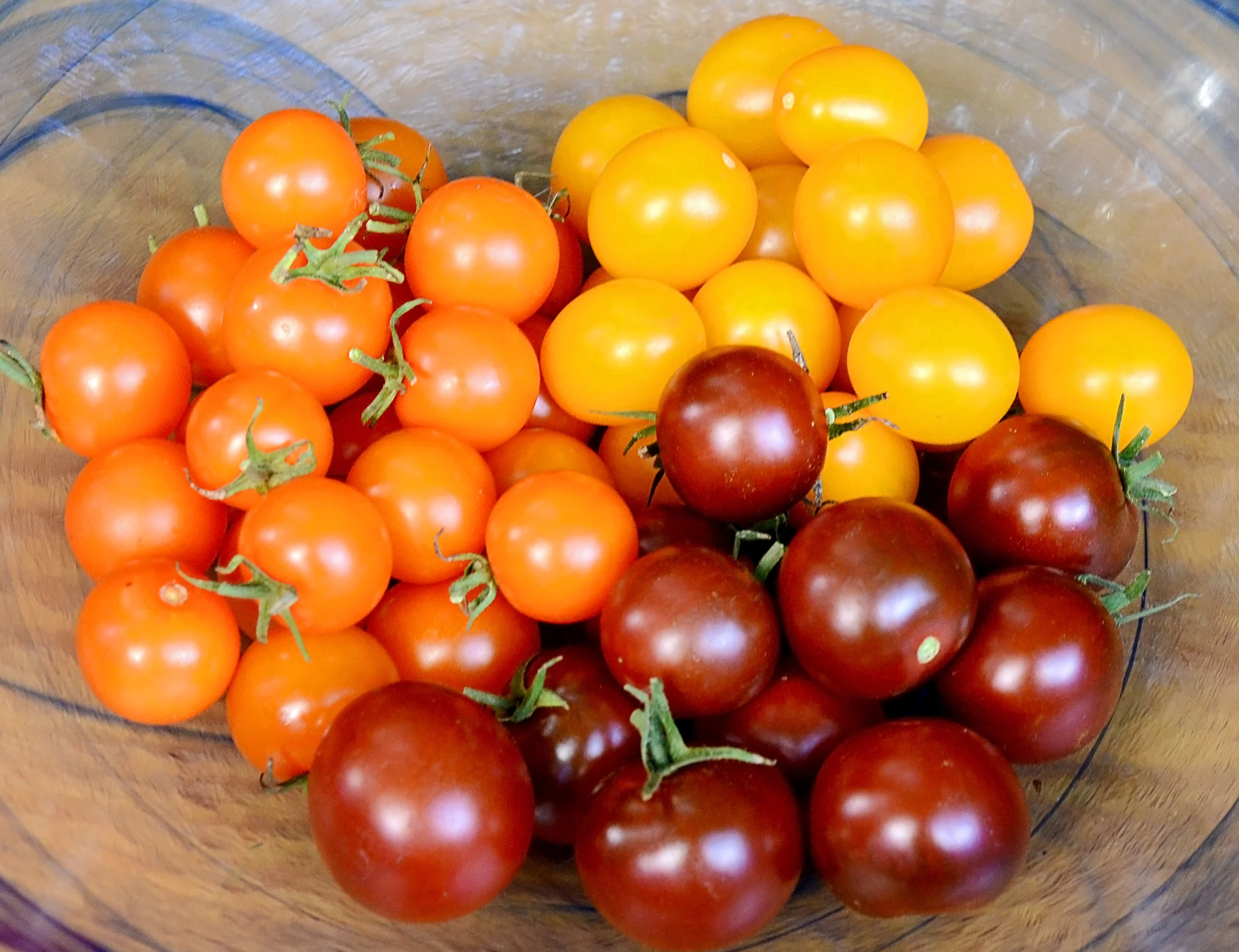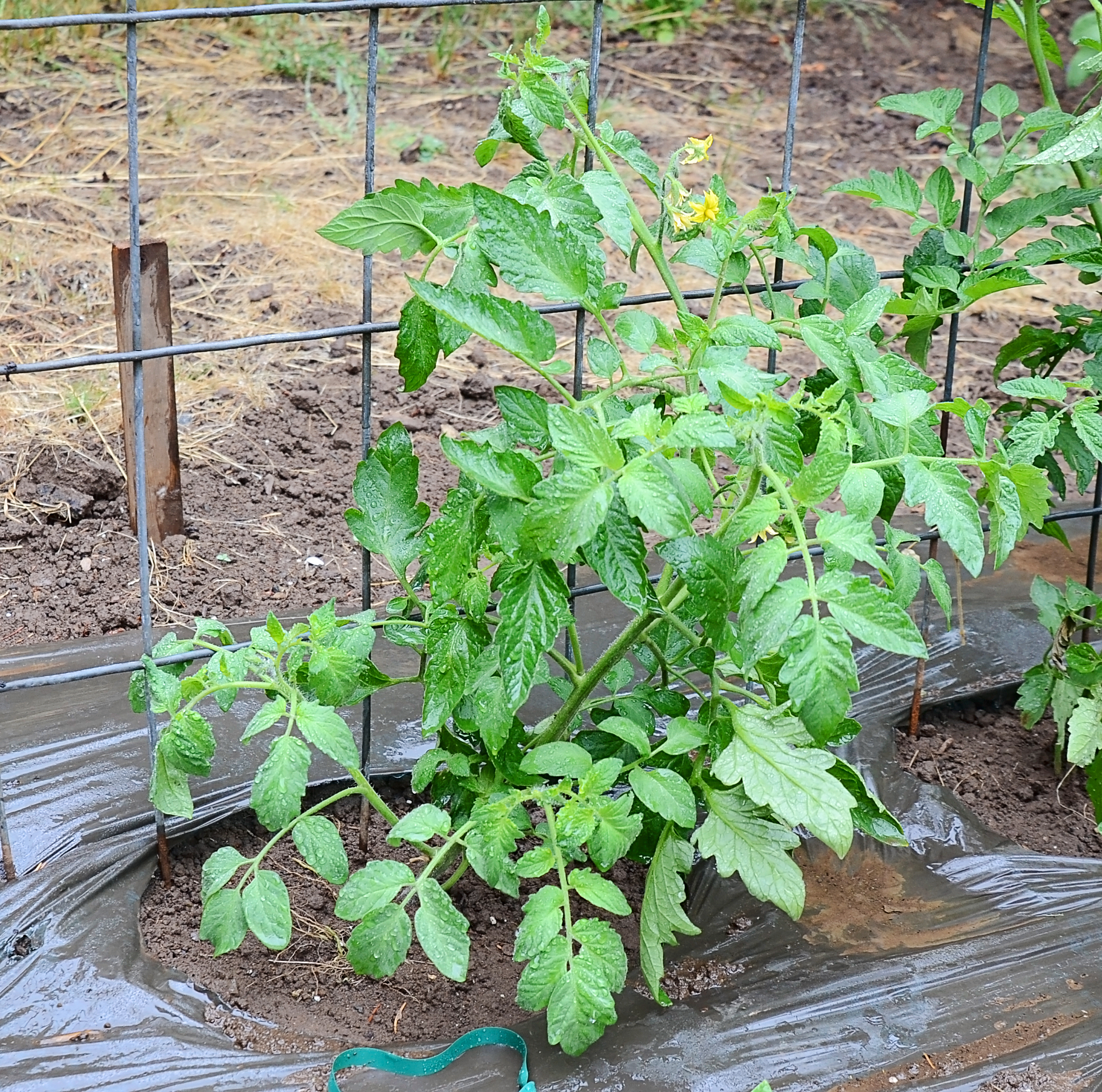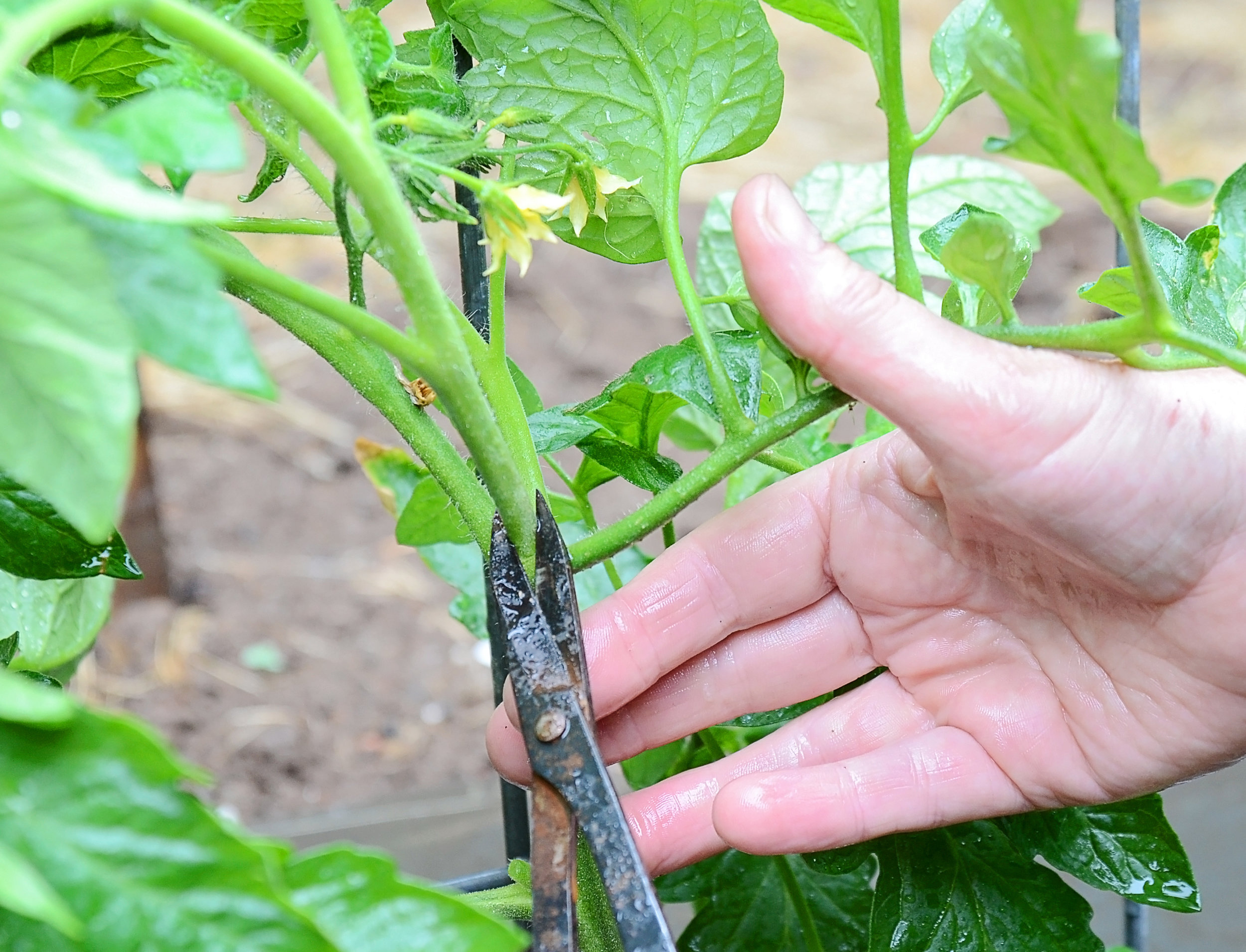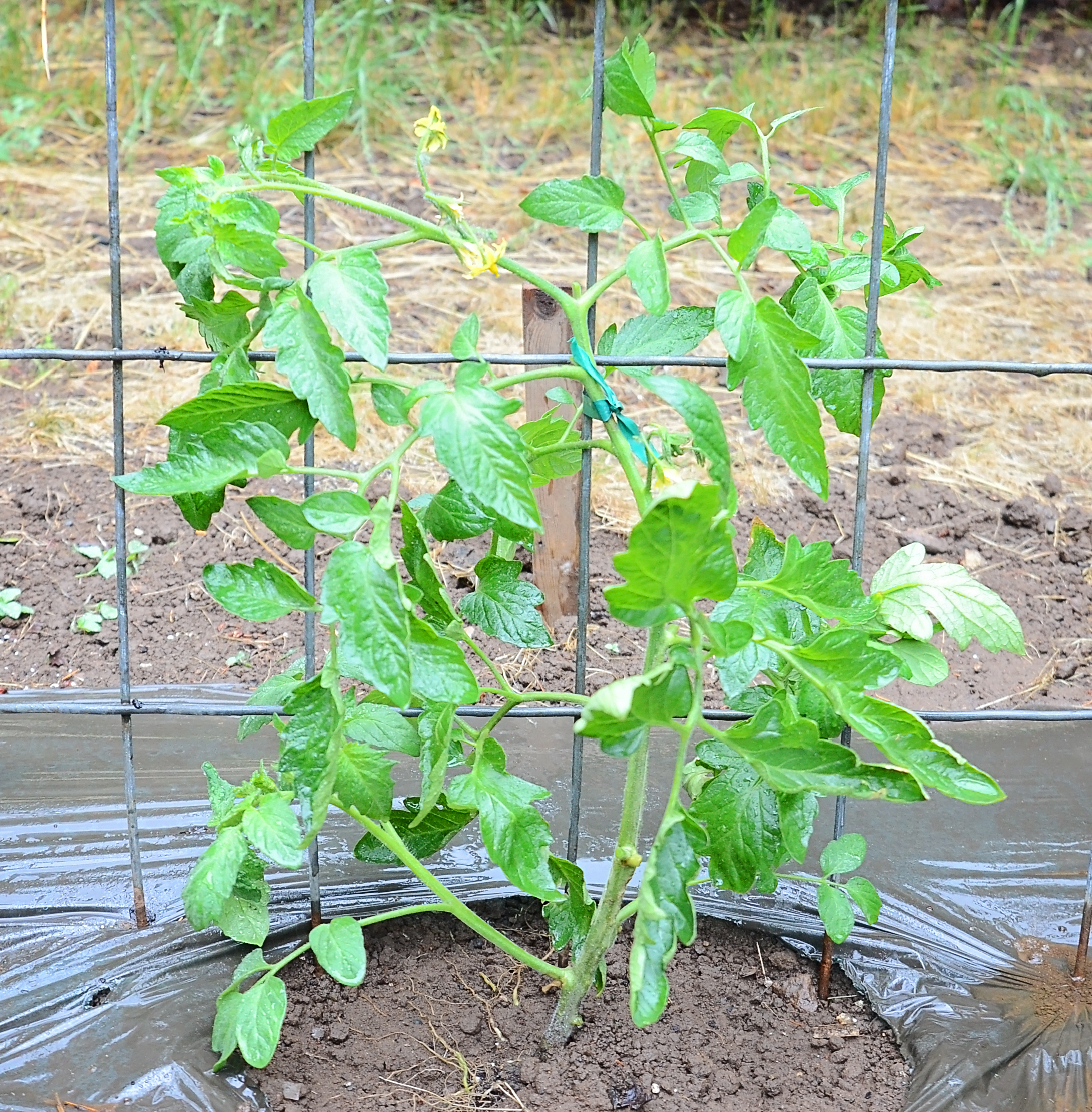Tomato Talk: Tips & Techniques for a Healthy, Tasty Crop
Tomatoes are probably the most popular crop grown by American home gardeners. With their high success rate and offering the rewards of incomparably delicious fruit, you’ll find tomatoes growing in the vast majority of gardens, patios and farms. Talk to any avid tomato grower, and you’ll undoubtedly be offered a heaping earful of personalized cultivation tips that will guarantee a bountiful harvest. These will range from the logical to the outlandish, which is enough to bewilder even the most seasoned gardener. The following tips represent a few of this gardener’s own guidelines from years of personal and professional experience and experimentation.
Since we’re currently well into the tomato growing season, we’ll skip seed starting & transplanting and move directly into cultivation of established plants, focusing on some basics that will hopefully aid in refining your tomato-growing techniques. One initial clarification is the difference between the two types of tomato plants: determinate and indeterminate.
Determinate plants tend to grow bushy and stay short, producing a single, concentrated flush of fruit.
Indeterminate plants grow more like vines. They will grow very tall and full (if not pruned) and will continue producing blossoms and fruit until the plants succumb to the frost.
Most tomato varieties are indeterminate and require support to keep the vines off the ground and healthy.
Now that we’re clear on determinate versus indeterminate and have already mentioned support, let’s discuss the options for trellising. Providing support for your plants will help keep the tomatoes off the soil and reduce stresses on the vines that are bearing the weight of ripening fruit. If you happen to be growing short-statured, determinate plants, even they can benefit from support. The simple, small ring tomato cages are fine for most determinate varieties, although they’re usually too small and flimsy for most indeterminate plants.
Indeterminate tomatoes require taller and more heavy-duty support systems. These plants can grow 6-8 feet tall or more depending on the variety and growing conditions, so a 4-6 foot tall structure is not unreasonable. There are innumerable trellising structure designs available for indeterminate tomatoes, and I’ll break them down into two main categories depending on your pruning practices (we’ll delve into that next).
From an employee garden: A creative way to trellis using some leftover pea & bean string
If you don’t prune your indeterminate tomatoes, we found the most practical support system is a folding cage with a square footprint that’s made of heavy gauge wire. Designed to support the weight and accommodate the height of a well-developed plant, these long-lasting cages fold flat for easy storage in the off-season. They contain the plant and offer easy access to the fruit, too. I’ve seen similar cages made of 1 x 1 wood slats, but these usually don’t fold. If you’re handy, have some scrap lumber and room to store them, they’re a great option since they’re cheap and easy to make.
Cattle panel trellises at our trial farm.
A nice alternate is constructing a cage from cattle panel. This sturdy stuff is available at farm or building supply stores in 4 x 16 foot sections. I’ve found it to be very versatile. Bolt cutters make quick work of turning it into smaller size sheets, and it’s easy to connect together with zip ties.
From a customer garden: Zig-zag structure
You can make A-frame cages for multiple plants or upright zig-zag structures that will support entire rows of pruned or unpruned plants. The wire lasts for years, but you may have to replace the ties after a few seasons.
This leads us to the topic of pruning. Pruning your tomato plants keeps their structure and growth organized, focused and controlled. It also encourages air circulation, which will help reduce fungal infections, and it opens the fruit for even sun exposure, which can aid ripening. Determinate plants don’t require pruning, but indeterminate types can benefit from it.
If you choose to prune, there’s a very simple method to optimize production, fruit quality and plant health. Maintain two to three main stems from each plant. Doing so changes the natural growth of the indeterminate plants from super jungles to easy-to-manage vines and lends the plants to flat, espalier-style trellising. To prune, look at your indeterminate plant and identify the main stem coming out of the ground. Moving upwards, notice that at each joint where a leaf emerges from the stem, there’s a branch sprouting. These branches are suckers. Select all but two of the lower suckers and pinch them off. Those two remaining suckers will become stems and produce more suckers at their leaf intersections. Remove all the suckers as they appear on all three stems. The resulting triple-vine plant (or double if you choose to prune down to two main stems) can be supported on stakes, flat panels, walls, fences, or on suspended strings or wire.
My final tomato growing tip is the most fundamental and also the most important: watering. Tomato plants are fairly resilient and can thrive under a wide range of conditions, but you can potentially improve the health of your plants and flavor of the fruit if you follow some basic guidelines. Tomatoes don’t mind going fairly dry between watering. Once established, it’s best to give your plants very deep, infrequent irrigation. At our trial farm we typically water about once per week. The water is delivered very slowly to allow it to seep into the ground and encourage the plants to produce deep roots.
If you’re growing your plants in pots; choose large containers (ten gallons or larger for indeterminate plants) and regulate your watering schedule by the size of the plant and weather conditions. Always provide enough water to see the excess releasing from the drainage holes in the bottom of the pot, and don’t allow the plants to stand in water.
One final flavor tip: withhold irrigation in the final weeks of the season. This forces the green fruit to ripen, concentrates the flavor, and helps prevent splitting.
Since everyone’s garden conditions and techniques are unique, I like to stress that gardening tends not to be an exact science. The rules are fairly flexible, and each gardener discovers what works best for them through trial and error. Do what works for you and your garden, and keep an open mind. I recommend experimenting with different techniques or products when you’re looking to improve your results, and try new varieties every season. You never know what or how it will work until you grow it!
Author: Kat B.











